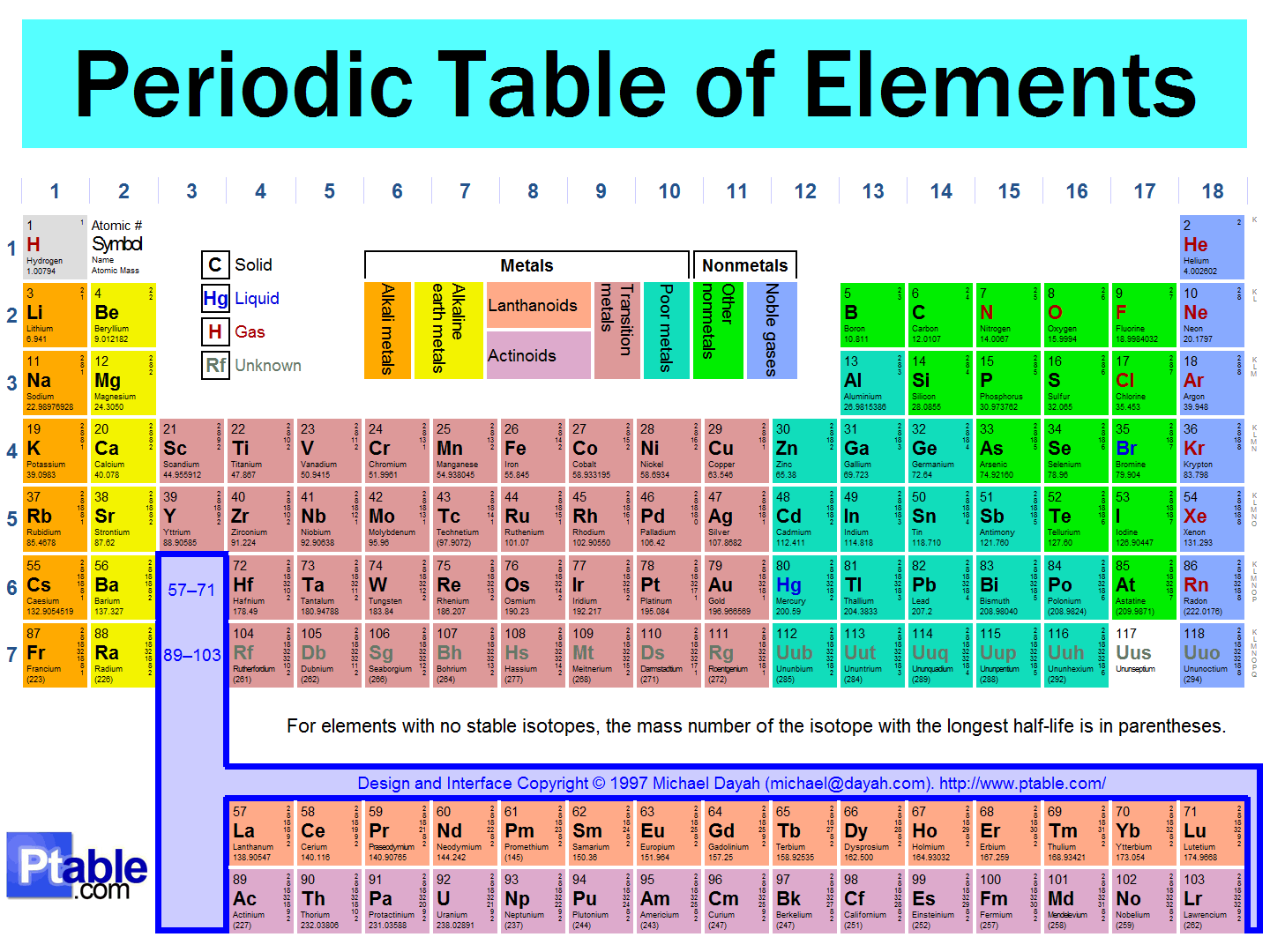- Isotopes of silver range in relative atomic mass from 92.950 u (93 Ag) to 129.950 u (130 Ag); the primary decay mode before the most abundant stable isotope, 107 Ag, is electron capture and the primary mode after is beta decay.
- Silver is extracted from the anode waste sludges of electrolytic copper-refining. Isotopes: Silver has 35 isotopes whose half-lives are known, with mass numbers 94 to 128. Naturally occurring silver is a mixture of its two stable isotopes, 107 Ag and 109 Ag with natural abundances of 51.8% and 48.2% respectively.
- This shiny metal is extremely common in nature, possessing an atomic mass of around 107.87 amu.
What Is The Atomic Symbol For Silver
1) Consider 500 g of silver (atomic mass 107 g/mol). Assume that the temperature is high enough that equipartition applies. We heat the silver by immersing it in water; by measuring the temperature change of the water we compute that 300 J of heat energy entered the silver What was the change in temperature of the silver? 2.57 K 0.6 K 4.99 K 169 K 0.0466 K 0 Submit.
Atomic Mass Of Ag
Click to see full answer
 Also question is, what is the mass of Ag − 109?
Also question is, what is the mass of Ag − 109?Question: Silver has an atomic mass of 107.868 amu and only two naturally-occurring isotopes. The Ag-109 isotope (108.905 amu) has a natural abundance of 48.16%.
Similarly, how many electrons does AG 109 have? protons = 47 electrons = 47 neutrons = 60 b. How do the numbers of protons, neutrons, and electrons in a neutral atom of Ag-109 compare with those of Ag-107? Ag-109 and Ag-107 both have the same number of electrons and protons. However, Ag-109 has two additional neutrons.
Secondly, how do you find the average mass of an isotope?
To calculate the average mass, first convert the percentages into fractions (divide them by 100). Then, calculate the mass numbers. The chlorine isotope with 18 neutrons has an abundance of 0.7577 and a mass number of 35 amu.
What has a mass of 1 amu?
An atomic mass unit (symbolized AMU or amu) is defined as precisely 1/12 the mass of an atom of carbon-12. The carbon-12 (C-12) atom has six protons and six neutrons in its nucleus. In imprecise terms, one AMU is the average of the proton rest mass and the neutron rest mass.
| Isotope | Atomic mass (Da) | Isotopic abundance (amount fraction) |
|---|---|---|
| 107Ag | 106.905 09(2) | 0.518 39(8) |
| 109Ag | 108.904 756(9) | 0.481 61(8) |
In its 1961 report, the Commission recommended Ar(Ag) = 107.870(3) after carefully reviewing thereliability of this value. It was recognized to be of great importance because some forty other elementshad their atomic weights determined in terms of the equivalence of their halides to silver or silver halides. In 1967, new atomic-weight-value for bromine prompted revisions of the atomic weights of chlorine and silver; Ar(Ag) was changed to a value of 107.868(1).
In 1981, the Commission welcomed a superior new isotope-abundance measurement by NIST. No significant difference was found between a number of silver metal and mineral samples with one minor exception now believed tobe due to an impurity. The Commission was able to recommend Ar(Ag) = 107.8682(3), which was revised slightly in 1985.
Through the greater use of mass-spectrometric determinations of atomic weights, silver is losingsome of its key role attributable to the stability of its monovalent ion. However, the atomic weight ofsilver has lost none of its significance as a principal means for determining the Faraday constant. Theatomic weight determination coupled with the best value of the electrochemical equivalent ofsilver, has re-established the electrochemical method as the most accurate for determining the Faradayconstant, and has significantly contributed to least squares adjustments of the fundamental constants.
© IUPAC 2003
CIAAW
Silver
Ar(Ag) = 107.8682(2) since 1985
The name derives from the Anglo-Saxon seofor and siolfur, which is of unknown origin. The symbol Ag derives from the Latin argentum and Sanskrit argunas from 'bright'. Silver was known in prehistoric times.
Isotopic reference materials of silver.
